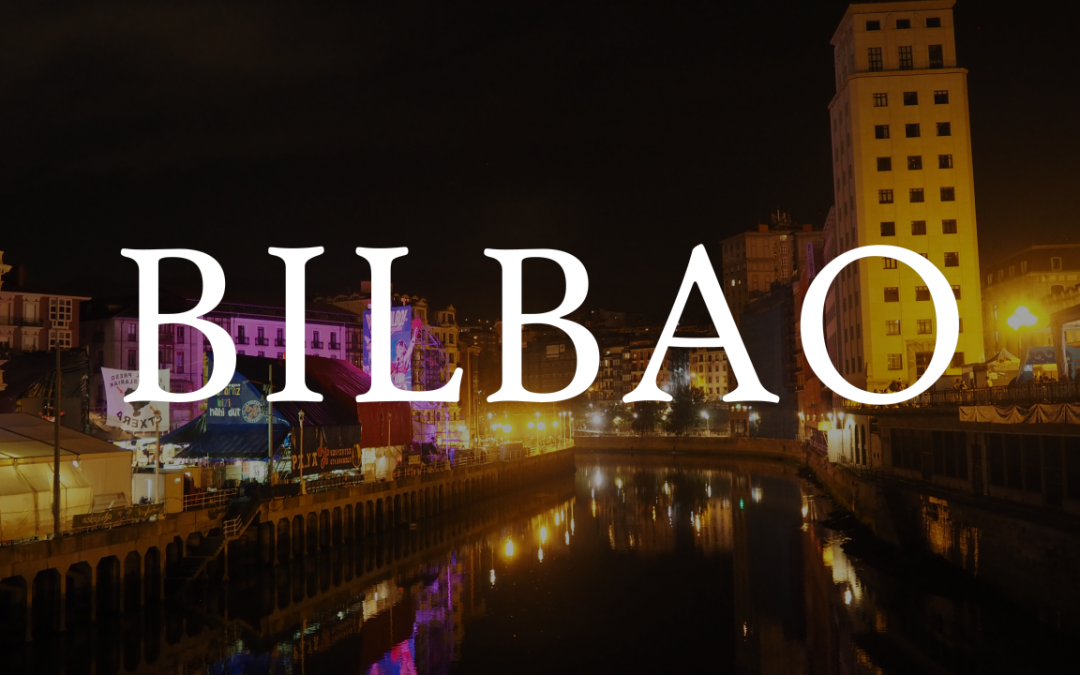In the summer of 2018 I took a long trip across northern Spain, visiting 5 different cities by train. The last of which was Bilbao. On hearing where my final destination was, native Spanish were always surprised. And it’s easy to understand why. Bilbao isn’t exactly a top tourist destination. It’s a lesser known, more gritty and urban city, full of red brick industrial style buildings. On the face of it, there isn’t much more than that to Bilbao. But that’s just on the face of it. Bilbao is the beating heart of Basqueland, a historical region covering parts of both Spain and France – a region still struggling for it’s independence and unity. Among many other things, Bilbao being it’s cultural and industrial center makes the city completely unique.
The first things I Noticed
The first thing I noticed was the unusual look of Bilbao. Physically it was similar to other European industrial cities like Manchester, being compact and full of bleak depreciating neighborhoods. In fact there are some parts of Bilbao that look like the setting for a new blade runner installment. But at the same time there is a strange beauty to the city. It is surrounded by vast mountains and lush wilderness, meaning that from almost any part of Bilbao you can see green rolling hills overlooked by mountains. The contrast between this and the industrial style setting you are standing in is unlike that of anywhere else I have been. It’s a big city feel with easy access to a type of unspoiled wilderness that is usually far away.

The second thing I noticed is language. Although Spanish is spoken here, so is another language: Basque. This is the native language of Basqueland, hence it’s name. Street signs and advertisements tended to be written in both languages. Seeing Spanish feels natural to me. Being based on Latin, it is similar to English, which is around 50 percent Latin in origin. But Basque seemed different and alien just from the sight of it, and there’s a good reason for this. Basque is an isolate language, meaning there is no other language related to it. It is completely unique. It is also very complex and difficult to interpret. Luckily, everyone I encountered spoke Spanish well. Although I did find you get better service in bars if you order in Basque.
I also soon noticed that this part of Spain has a rather different climate, being more humid and raining more often. I guess that’s why the region is so green.
But the most interesting thing I noticed was the clear presence of Basque nationalism. Everywhere I went I was greeted by pro-independence symbolism spray painted onto buildings, hung from windows, and even on some roofs. Be under no illusion, just because we don’t hear much about it on the news, many Basque people are determined to win independence from Spain. Don’t make the mistake of referring to them as Spanish. It could go badly.

Things To See
Guggenheim – The name Guggenheim might sound familiar, and that’s because it’s the name of a famous museum in New York. Over a million people visit it each year, and has become one of the world’s most well known museums. But what a lot of people don’t know is that there is another Guggenheim museum in Bilbao. That’s right, this small city tucked away in the Basque country has it’s own Guggenheim, and it’s collection on display is just as prestigious as it’s sister in New York. The building alone is interesting to look at, and it contains a genuinely good experience inside, unlike most art museums because let’s face it, no one has time for that.

La Salve – Literally right next to the Guggenheim is La Salve, a large bridge stretching over the river that flows through Bilbao. It’s name literally means “I saved her”. According to legend, sailors would pray to the local patron saint for protection when leaving this river on journeys out to sea. Today, climbing the bridge gives you a great view of Bilbao and it’s surrounding areas, and especially of the river it stands above. With it being so close to the Guggenheim, the two are often depicted together in artwork and photography, giving both fame and prestige. Another structure often depicted with the them is a giant sculpture of a spider just outside of the Guggenheim. The spider alone has become a known symbol associated with Bilbao, I even bought a fridge magnet depicting it.

Basilica of Begoña – Head across the river to the outskirts of Bilbao and you can find a hill. It’s not just a hill. On top of it is a 16th century church, built in Gothic style, with a spiral tower visitors can climb. Both the outside appearance and inside of the church is well known to locals for it’s beauty. But few tourists catch wind of it. The church stands as a jewel of Renaissance times, with it’s Gothic style showing a clear French influence. This is nothing new, France has historically held massive influence on this part of what is now Spain.

Casco Viejo – Heading back to the heart of central Bilbao, Casco Viejo is the city’s medieval quarter. Without the modern shops and bars it would feel like actually walking through a middle ages village, with narrow streets cobblestone roads, traditional taverns and a 14th century cathedral. It’s just a really interesting area to walk through and explore.

History

This is the perfect way to move into the history of Bilbao, because in my view no city guide is complete without some historical context to what you’re seeing. Bilbao was founded in the 14th century by Diego López V de Haro, local lord and head of a rich and powerful noble family. Before him it was just a small and impoverished fishing village. But he transformed it into a prime location for importing goods into Spain. This was because, as a Spanish lord, he could exempt incoming traders and merchants from having to pay any kind of royal tribute. Over several generations of development under the rule of him and his descendants, Bilbao became an important regional port with links to England, Flanders and France.
This, combined with the numerous bloody wars Basqueland has witnessed drove people to settle in Bilbao. Still, it’s population was only 11 thousand in 1880. It was industrialization that transformed Bilbao into a city. By 1900 the population was over 80 thousand – an increase of 69 thousand in just 20 years. The city now became an important hub of economic activity, attracting businessmen from all over, looking to make a fortune. Needless to say, Basque nationalism thrived within the city in this era, with Basque factory workers seeing the often Spanish business owners grow rich why they struggled daily. But Bilbao has always been part of Spain.
During the Spanish civil war of the 1940s, the city was a key target for the nationalists to capture, with it being such a vital shipping and industrial hub. It was severely bombed, which is why Bilbao has a kind of rough modern industrial feel to it. The nationalist bombing raids destroyed much of it’s historic areas and had to be rebuilt from the ground up. Luckily, when the war was over, the Spanish economy boomed. For several decades it was the world’s second fastest growing economy – second only to Japan. As it was still an industrial hub, Bilbao was among the boom’s main benefactors.
Food
Despite this rich history, Bilbao today is more well known for it’s rich food. Basque cuisine is becoming famous around the world, with award after award being won by native Basque restaurants. Many of which are in Bilbao. There isn’t much to say really. It’s just good food that you won’t find anywhere else on Earth.
Kalimotxo – Whatever food you try, be sure to get a glass of Kalimotxo. Kalimotxo is a drink made in half of wine and hald coca cola. To be a true Kalimotxo, the type of wine doesn’t matter, but apparently it needs to be coca cola – not pepsi or Dr Pepper. I was told this quite passionately by locals. It’s a wonderful drink; much more so than it sounds. Unlike other foods or drinks that have become iconic within specific cultures, Kalimotxo only goes back to the 1970s. But hey, a good drink is a good drink.
Even without the wonders of Kalimotxo, Bilbao is a city worth visiting for anyone wanting to experience the true Spain. For a nation can not only be experienced by the typical tourist destinations. Just visiting, say, Madrid and Barcelona only shows you one side of a multi layered country. Another side can clearly be seen in the Basque country. And, for me, travel is about experiencing multiple layers of each destination.

